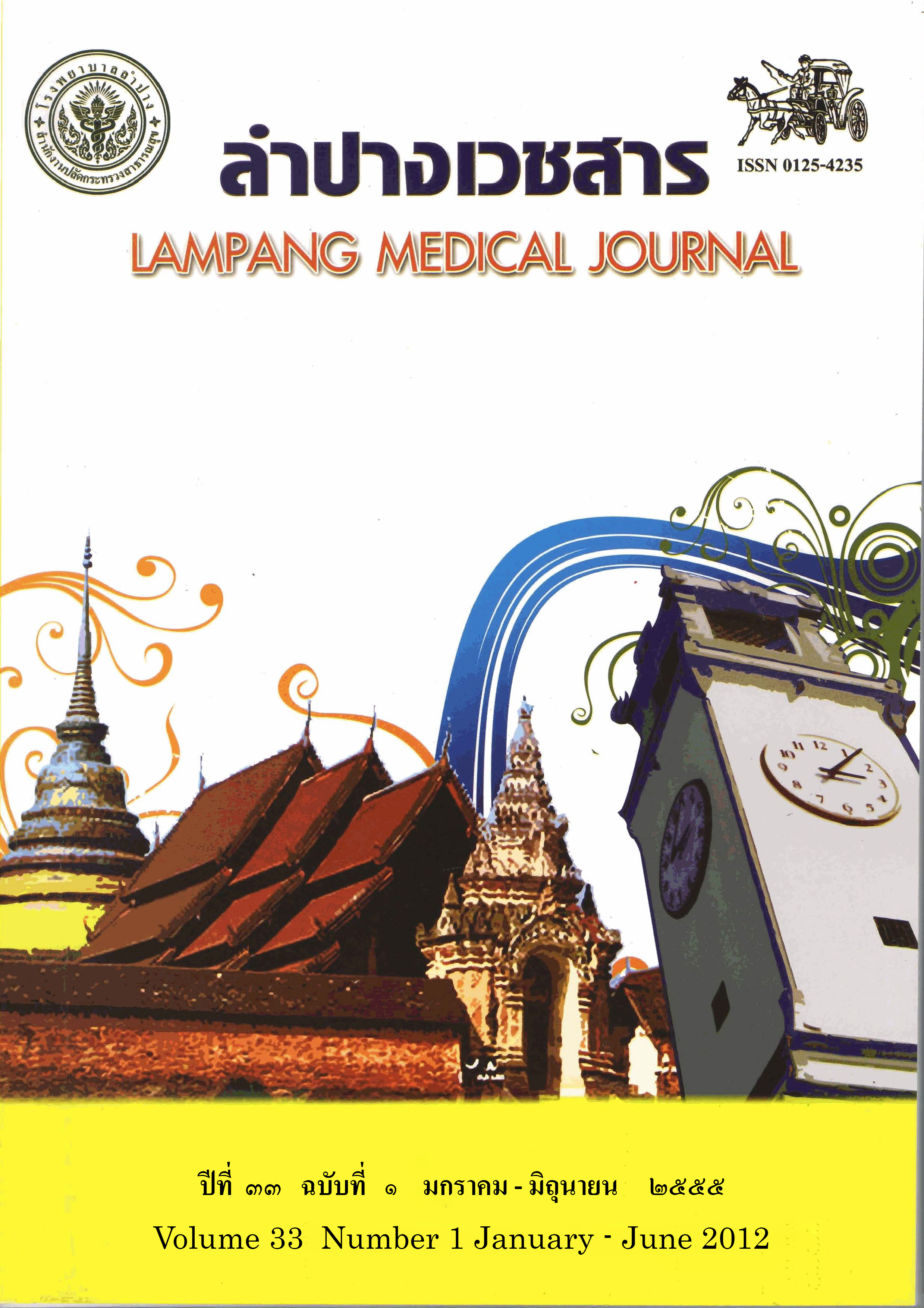Results of Prenatal Childbirth Preparation to Adopt the Upright Position During the Labor
Main Article Content
Abstract
Background : Being upright (sitting, chairs, squatting, kneeling) has advantages for pregnant women during the labor. Prenatal childbirth education helps them to be better prepared and feel more confident to promote vaginal delivery.
Objective : To study the results of prenatal childbirth preparation to adopt the upright position during the labor. Material and method : This prospective, non-randomized, concurrent controlled trial compared 200 singleton parturients who were encouraged to adopt the upright position during the labor with 200 others who served as a control group. Women in the study group attended an education class about the benefits of being upright and practiced at the gestational age of 32-36 weeks. During the labor, utilizing upright positions were assessed by Likert scale every 1 hour in latent phase and 30 minutes in active phase. Duration of labor, assisted deliveries, birth weights and use of pethidine were recorded. Comparison between groups was analyzed by Mann-
Whitney U test.
Results : The mean age was not different between groups but women in the study group were taller and had higher educational level. In latent phase, 48 women had maternal or fetal complication and were excluded. Among 176 remaining parturients in each groups, women in the study group kept upright positions better than the control group significantly (p<0.001) but not different in active phase (p=0.588). Duration of labor in the first stage was shorter in the study group (152.3 ± 113.8 vs 195.4 ± 147.6 minutes, p=0.007), especially in nullipara (p=0.024) but not different in multipara (p=0.293). There was a non-significant reduction in duration of second stage in the upright group (23.6 ± 21.3 vs 26.6 ± 23.6 minutes, p=0.416) or increment of normal vaginal delivery rate (87.5% vs 78.4%, p=0.070).
Conclusion : Prenatal childbirth preparation at the gestational age of 32-36 weeks promoted utilizing the upright position during the latent phase of the labor. The shortening duration of labor was apparent only in the first stage.
Article Details

This work is licensed under a Creative Commons Attribution-NonCommercial-NoDerivatives 4.0 International License.
บทความที่ส่งมาลงพิมพ์ต้องไม่เคยพิมพ์หรือกำลังได้รับการพิจารณาตีพิมพ์ในวารสารอื่น เนื้อหาในบทความต้องเป็นผลงานของผู้นิพนธ์เอง ไม่ได้ลอกเลียนหรือตัดทอนจากบทความอื่น โดยไม่ได้รับอนุญาตหรือไม่ได้อ้างอิงอย่างเหมาะสม การแก้ไขหรือให้ข้อมูลเพิ่มเติมแก่กองบรรณาธิการ จะต้องเสร็จสิ้นเป็นที่เรียบร้อยก่อนจะได้รับพิจารณาตีพิมพ์ และบทความที่ตีพิมพ์แล้วเป็นสมบัติ ของลำปางเวชสาร
References
World Health Organization. Joint Interregional Conference on Appropriate Technology for Birth, Fortaleza, Brazil, 22-26 April 1985: Summary Report. Geneva: World Health Organization; 1985.
Simkin PP, O’hara M. Nonpharmacologic relief of pain during labor: systematic reviews of five methods. Am J Obstet Gynecol 2002;186(5 Suppl Nature):S131-59.
Michelle T. Women during the reproductive. In: Breslin ET, Lucas VA, editors. Women’s health nursing toward evidence-based practice. St. Louis, Missouri: Saunders; 2003.p.573-9.
Priddis H, Dahlen H, Schmied V. What are the facilitators, inhibitors, and implications of birth positioning? A review of the literature. Women Birth 2011; Epub 2011 Jun 8.
เบญจรัตน์ ยศเสถียร, ลำดวน คุณสมบัติ, สุนทรี อินทราพิเชฐ, อารยา ประกฤติกรชัย. ผลของการเตรียมคลอดอย่างมีแบบแผนต่อพฤติกรรมการเผชิญความเจ็บปวด ระยะของการคลอดและคะแนนแอปการ์ของทารกแรกเกิดของสตรีตั้งครรภ์ในระยะคลอด. วารสารพยาบาลศาสตร์ 2542;17(2):54-63.
Lawe N. The pain and discomfort of labor and birth. J Obstet Gynecol Neonatal Nurs 1996; 25(1):82-92.
Allen IE, Seaman CA. Likert scales and data analysis. Quality Progess 2007;40:64-5.
Ricci SS. Essentials of maternity, newborn and women’s health nursing. Philadelphia: Lippincott Williams & Wilkins; 2007.
Mayberry LJ, Wood SH, Strange LB, Lee L, Heisler DR, Neilsen-Smith K. Managing second-stage labor. AWHONN Lifelines 1999 Dec-2000 Jan;3(6):28-34.
Gupta JK, Hofmeyr GJ, Shehmar M. Position in the second stage of labour for women without epidural anaesthesia. Cochrane Database Syst Rev 2012;5:CD002006.


